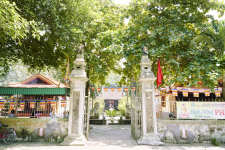
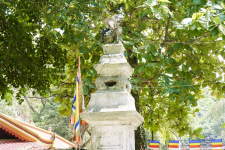
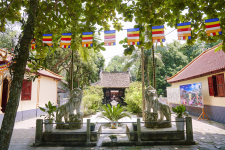
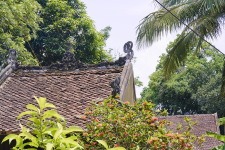
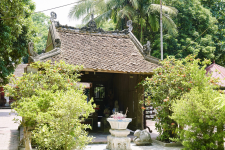
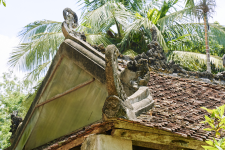
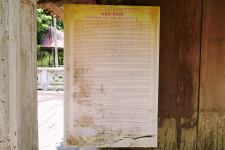
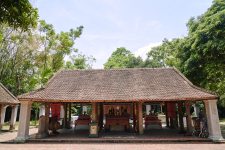

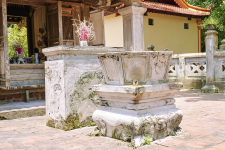
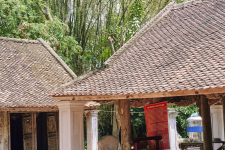
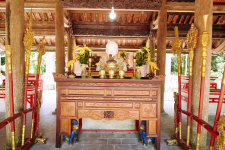
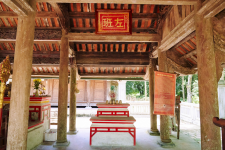
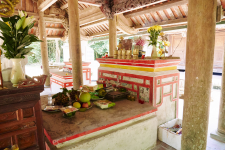
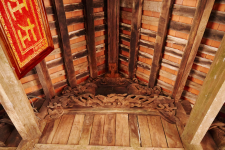
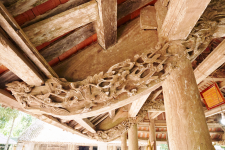
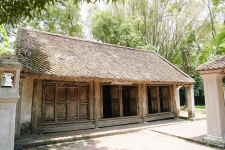
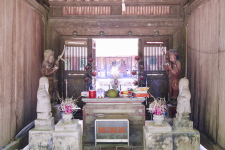
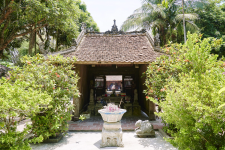
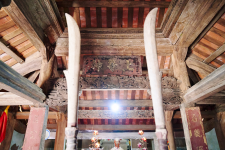
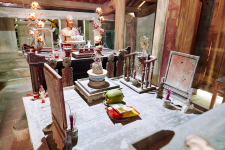

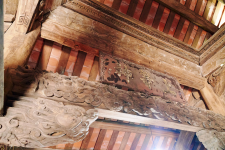
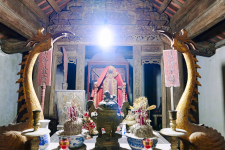
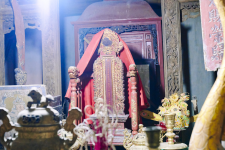
Camera tour
Price: Free
Time to visit a place: 60 phút
Open Time: 7:00 AM - Close Time: 6:00 PM
Address: Hung Nhan Village, Hung Nguyen District, Nghe An Province
RAM TEMPLE – HUNG NGUYEN DISTRICT
Ram temple in Hung Nhan commune, Hung Nguyen district, Nghe An province was started construction in 1831, completed in 1832; The temple was last repaired in 1922. The temple was a place to worship historical figures who had contributed to the country and people like Le Loi, Nguyen Quang Hop, or angels like Cao Son Cao Cac .... Through the process of local development, the temple has witnessed great historical events taking place here. The masters of the anti-French period, the elite youths before leaving their homeland for revolutionary activities like Pham Hong Thai and Le Hong Phong, once secretly made an appointment to meet at the temple. During the years 1930-1931 and the August Revolution (1945), Ram Temple was a gathering place for forces to listen to lectures on the revolution, struggle to rob the government. During the resistance war against the US, Ram Temple was a place to store weapons, a center for transporting weapons from the North to the South by waterway on the Lam River.
Ram Temple is located in a relic complex with both temples and pagodas, including the inner Ram temple and outer Ram temple with many horizontal and vertical houses, the relic campus has a total area of 10,401 m2 on a high mound, surrounded by ancient trees on four sides. With such a height, along with a system of luxuriant green trees looming on the curved roof of the temple, the architectural space here is more ancient..
The inner temple includes the Temple Gate, Holy House, Pagoda (Long Dong Tu), front retaining barrier, Righ hall, Lower hall, Middle hall, and Upper hall. Outer Ram Temple includes Temple Gate, letter book, Lower - Middle - Upper hall and Nguyen Quang Hop Tomb. Inner and outer Ram Temple's gate was created by 2 pointed pillars, each pillar is 5 m high, 0.60 m wide, the pointed pillar architectural structure consisted of many components such as foundation base, pillar body, square bottom, art shape... connected vertically. This architectural structure consists of many components as above, making the pointed pillar not monotonous, and at the same time increasing the majesty and aesthetic value in front of the monument.
Through the temple gate, entering the monument, the Holy House is located on the left side of the courtyard in front of the inner Ram Temple. Next is front retaining barrier, lying in the middle of the axis of the gods, here this barrier has the effect of "letter book" to avoid people going straight to the temple. Passing the above works is to enter the main hall. The main hall of Inner and outer Ram Temple is arranged in the style of the letter "Tam" (also known as three halls) Lower hall, Middle hall, Upper hall. All the above-mentioned architectural works are the result of the process of construction and restoration.
Although the landscape and overall architecture of the ancient monument has changed, lost or damaged, the remains of Ram Temple still contain great historical, cultural, architectural and artistic values. Meanwhile, the ranking of National Monuments is increasingly having stricter and more rigorous criteria, Ministry of Culture, Sports and Tourism's ranking of the architectural and artistic relic of Temple Ram as a National Monument is a Great honor for the Party Committee and people of Hung Nguyen district in particular and Nghe An homeland in general.
Distance: 7.93 km
Distance: 7.94 km
Distance: 8.12 km
Distance: 9.03 km
Distance: 9.21 km
Distance: 9.21 km
Distance: 9.23 km
Distance: 9.27 km
Distance: 9.33 km
Distance: 9.52 km
Distance: 9.55 km
Distance: 9.57 km
Distance: 2.47 km
Distance: 7.98 km
Distance: 8.05 km
Distance: 8.05 km
Distance: 8.27 km
Distance: 8.39 km
Distance: 8.91 km
Distance: 9.31 km
Distance: 9.48 km
Distance: 9.51 km
Distance: 9.54 km
Distance: 9.60 km
Distance: 9.63 km
Distance: 9.64 km
Distance: 9.67 km
Distance: 9.85 km
Distance: 9.85 km
Distance: 10.02 km
Distance: 0 m
Distance: 2.82 km
Distance: 4.64 km
Distance: 4.93 km
Distance: 6 km
Distance: 6 km
Distance: 6.46 km
Distance: 6.46 km
Distance: 7.01 km
Distance: 7.08 km
Distance: 7.10 km
Distance: 7.31 km
Distance: 7.82 km
Distance: 8.14 km
Distance: 8.17 km
Distance: 8.36 km
Distance: 8.90 km
Distance: 9.02 km
Distance: 9.03 km
Distance: 9.12 km
Distance: 9.19 km
Distance: 9.43 km
Distance: 9.53 km
Distance: 9.59 km
Distance: 9.60 km
Distance: 9.65 km
Distance: 9.70 km
Distance: 9.84 km
Distance: 10.09 km
Distance: 10.11 km
Distance: 10.16 km
Distance: 10.17 km
Distance: 10.18 km



0
No Comment!